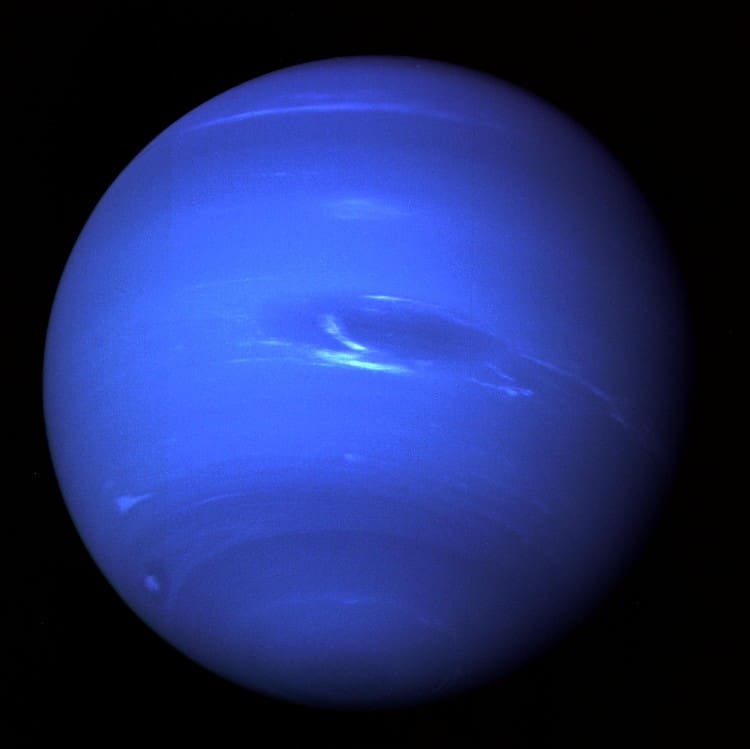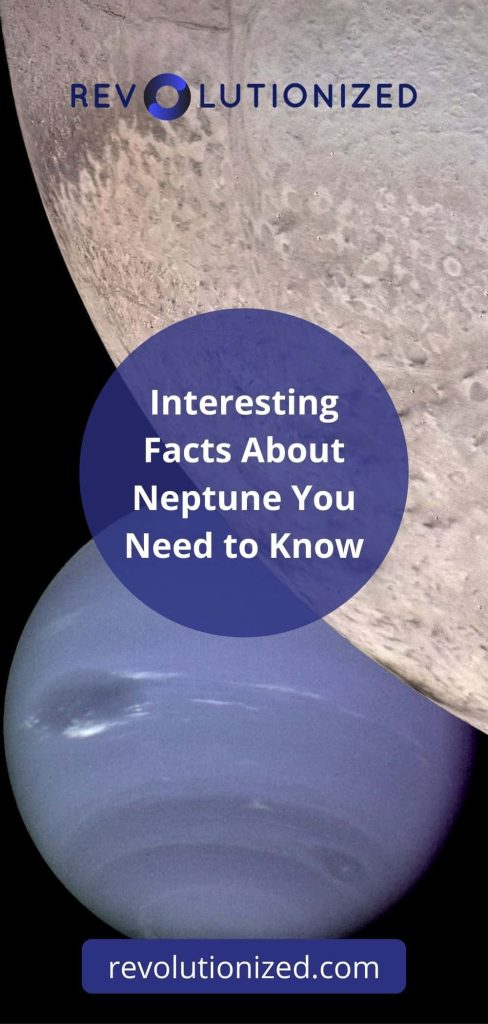



At the edge of the solar system, there is a beautiful blue giant spinning alone in the darkness. As of the time of this writing, Neptune is the last official planet in our little corner of the galaxy, with everything beyond it classified as dwarf planets. What makes Neptune, the beautiful ice giant, so special? Learning some facts about Neptune will help us find out.
Neptune might be the furthest planet from the sun, now that Pluto is a dwarf planet, but we’ve still learned plenty about our most distant celestial neighbor. Here are 12 interesting facts about Neptune you should know:
If you feel like there aren’t enough hours in the day on Earth, you’d be hard-pressed to get anything done on Neptune. One day on the gas giant is a little over 16 hours long, a full one-third shorter than our rotational cycle.
The methane in Neptune’s atmosphere absorbs red light and reflects blue, giving the planet its beautiful and iconic blue color.
Since its discovery, we’ve seen two massive storms form on the planet’s surface. These storms, dubbed Dark Spots, can last for years. While they aren’t as long-lived as the Great Red Spot on Jupiter, Neptune’s Dark Spots frequently appear in the planet’s atmosphere.
They might not be as elaborate as the ones you see in orbit around Saturn, but Neptune has a series of faint rings composed of ice particles and dust. Thanks to NASA’s James Webb Space Telescope, we’ve been able to view clearer images of the rings not seen in the last 30 years.
The three major ones are named for some of the astronomers credited with the planet’s discovery, including Adams, Le Verrier and Galle. These rings add to the complexity of Neptune’s structure and provide insights into the planet’s history and evolution.
We don’t have many pictures of the planets at the edge of the solar system. Voyager II is the only human-made probe to complete a flyby of the blue gas giant. It sent back pictures in 1989 as it flew by. We can see Neptune with the Hubble Space Telescope, but we don’t have any plans to send more probes as of right now.
If we lived on Neptune, no one alive today would have reached their first birthday. Neptune’s orbital period is the longest in the solar system, with the planet taking 60,190 days or nearly 165 Earth years to make its way around the sun.
Neptune is the Roman god of the ocean and sea, which is an appropriate moniker for the bright blue icy giant. Neptune is one of the three primary gods in the Roman pantheon alongside Jupiter and Pluto. He was depicted as a powerful figure wielding a trident, commanding the waves and creating earthquakes. His association with the watery depths reflects Neptune’s astrological influence on emotions, intuition and the subconscious.
In Greek mythology, Neptune’s name is Poseidon, brother of Zeus and Hades. He was responsible for causing storms and earthquakes — and providing safe passage for sailors. His trident was a symbol of his power and control over the ocean’s fury.
As of this writing, we’ve spotted 16 moons orbiting Neptune, though only 14 have been officially named. The moons are named after nymphs and lesser gods from Greek mythology. For example, the Nereid satellite pays homage to the Nereids, loyal companions and servants of Poseidon.
With a diameter of 1,680 miles, Triton is Neptune’s largest satellite and one of the most peculiar in the solar system. For one, it’s not actually a moon but a dwarf planet originally located in orbit in the Kuiper Belt. Triton is also the only large moon with a retrograde orbit, meaning it moves in the opposite direction of Neptune’s rotation. This peculiar orbit suggests it may have been captured by Neptune’s gravity rather than forming alongside the planet.
Triton is the coldest moon in our solar system, with temperatures reaching -391 °F (-235°C) and an icy surface reflecting up to 70% of sunlight. The satellite also features some strange geological activities, including ice volcanoes and geysers expelling nitrogen gas.
On Earth, we have seasons because of the planet’s axial tilt of 23.5 degrees. Despite its vast distance from the sun, an axial tilt of 28 degrees also gives Neptune some pretty dramatic seasons, each lasting around 40 years.
We discovered Neptune in 1846. Since then, Neptune has only completed one orbit of the sun. It finally returned to the part of the sky where we first spotted it in 2011.
Subzero temperatures aren’t the only reason Neptune is an ice giant. The distant planet features a unique weather phenomenon where diamond crystals form and fall through the planet’s interior.
Scientists believe this occurrence results from the planet’s unique composition and extreme conditions. Deep within Neptune, immense pressure and heat break down methane molecules, releasing carbon atoms. Under these extreme pressures — millions of times that of Earth’s atmosphere — the carbon atoms crystallize into diamond structures.
Now that you’ve learned some planet Neptune facts, check out its properties and even more technical information:

Neptune is currently the only planet you can’t see with the naked eye. There’s also a bit of a controversy surrounding the blue gas giant’s discovery. For one thing, Galileo marked it on a map of the sky hundreds of years before its official discovery. However, he had it down as a star rather than a planet. A pair of mathematicians — Urbain Le Verrier of France and John Couch Adams — predicted that a new planet dubbed Planet X would soon be spotted in a specific part of the sky.
The French astronomer Alexis Bouvard and a German one named Johann Galle officially found the planet on September 23, 1846. They didn’t spot it directly, instead predicting its location by observing irregularities in Uranus’ orbit. This information, paired with Galle’s calculations, helped them pinpoint Neptune in the sky. Of course, both sets of mathematicians took credit for the discovery, and astronomers have been arguing about this point for over 150 years.
Neptune is known for being the only planet in the solar system you can’t see with the naked eye. You can spot it with powerful ground-based telescopes if you’re skilled, but you’ll never see it just by looking up at the night sky. Once you do see it, you’ll understand why ancient astronomers named it for the Roman god of the seas. Its brilliant blue color is reminiscent of the depths of the Earth’s oceans.
It’s also known for the controversy surrounding its discovery, but beyond that, most observations have been from ground-based and orbital telescopes.
There are many facts about Neptune that make it unique. For one thing, it’s home to the strongest winds in the solar system. At upper altitudes, these winds can exceed speeds of 1,200 miles per hour (mph). In comparison, the Earth’s most powerful winds only reach a meager 250 mph.
We still have so much to learn about the most distant planet in our solar system. Yet, as of the beginning of 2020, there are no plans to explore the blue gas giant. That might change as we start exploring further into the solar system, but everyone’s current focus is on the Moon and Mars.
We’ve reached the end of the solar system. Where will we go next? There is still much for us to explore — more than we can even imagine. We’re not done yet.
Featured Image Credit: NASA/JPL


This site uses Akismet to reduce spam. Learn how your comment data is processed.